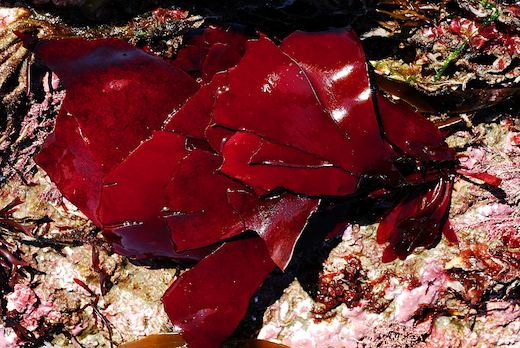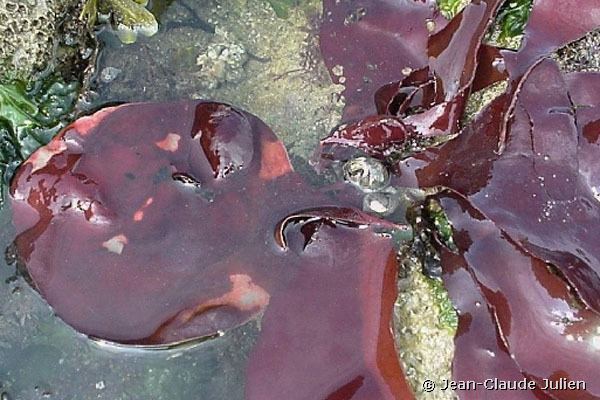Kingdom Plantae Class Florideophyceae | Division Rhodophyta Rank Species | |
 | ||
Similar Dilsea, Calliblepharis ciliata, Sea beech, Phycodrys rubens, Ahnfeltia plicata | ||
Dilsea carnosa, commonly known as the poor man's weather glass or the sea belt, is a species of red algae in the Dumontiaceae family of the order Gigartinales.
Contents

Taxonomy

The species was first described scientifically by Schmidel in 1794, under the name Fucus carnosus. The German botanist Otto Kuntze transferred the species to Dilsea in 1898.
Description

This red alga is dark red and flattened and somewhat leathery. It may be 30 cm or more long and 15 cm wide. It is usually not branched but may split.
Habitat
Attached to rock in the lower littoral,to a depth of 24m or more.It grows from a discoid holdfast with a short stipe.
Reproduction

The gametangial plants are dioecious, with male and female gametangia on separate plants. The spermatangia, male gametes, occur in patches near the edges of the fronds. Carposporangia release spores. Tetraspores occur near the margins and consist of four spores.
Distribution
Generally distributed around the British Isles and from Portugal to Arctic Russia.
